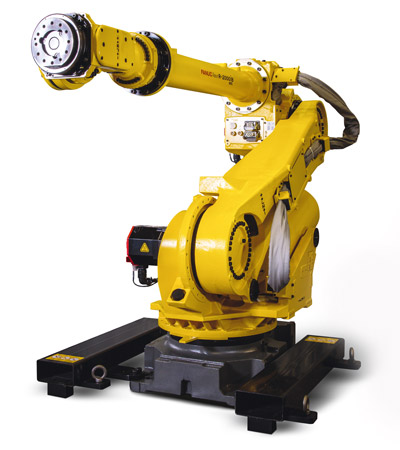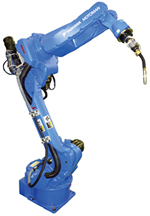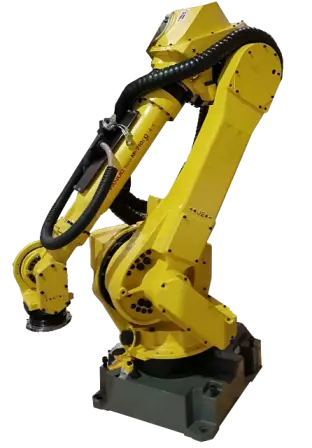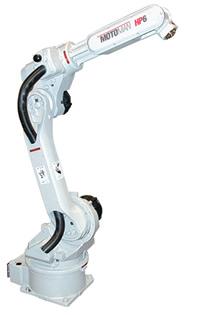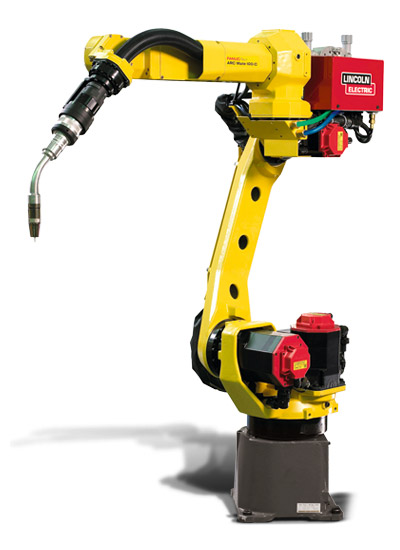TIG Welding vs Plasma Welding Robots
TIG welding and plasma welding are two types of arc welding processes that can be automated with industrial robots. Both of these processes are similar to one another since they involve the use of a tungsten electrode. However, there are some key differences between the two robotic welding methods. Understanding these differences allows users to select the best method for their operation in order to maximize the benefits of welding automation.
TIG Welding
Tungsten inert gas welding is one of the most common welding methods used in manufacturing today. During this process metals are welded together through heat produced from the arc that is created by the tungsten electrode. The electrode is maintained within a shielding gas during the welding process to protect the electrode and weld pool from contamination. The FANUC Arcmate 120ic and the Motoman MA1400 are two examples of welding robots that can be deployed for automating TIG applications.TIG welding is a preferred welding method of manufacturers since it produces precise and clean welds. There are some limitations with TIG as it can only be used to weld thin metals such as copper, steel, and aluminum. Robotic TIG welding is also a slower welding process, requiring longer passes of the weld torch than other methods. This is why it is best for welding delicate or intricate workpieces. TIG also produces high-quality bead appearances, making it ideal for workpieces in which the weld seem will be visible.
The main advantage of TIG welding is the complete control of the arc. Being able to control the arc results in strong, high-quality welds which are key for delicate workpieces. In addition, this welding method has low distortion rates with minimal spatter. Costs can be saved since it does not require a filler material, although one can be used. Popular robotic TIG welding sources include the Lincoln Powerwave 455M and the Lincoln Powerwave i400.
Plasma Welding
Plasma arc welding, or PAW, differs from TIG since the tungsten electrode is suspended inside the torch nozzle instead of the shielding gas. Positioning the electrode in the torch nozzle also separates the arc from the shielding gas, allowing plasma to flow through the torch and constrict the arc. The constricted arc then expels the plasma out of the torch at a high speed and temperature, melting and welding the workpieces. The ABB 2400 and the FANUC Arcmate 100ic can both be used to automate plasma welding applications.Plasma welding can be used for the same metals that can be welded with TIG. Unlike TIG, plasma welding can be used for both thin and thick metals. Another difference of plasma welding is that it requires two inert gases instead of one. One gas forms the arc while the other shields it. Its arc also produces much higher temperatures than TIG welding. PAW is much faster than TIG welding while still producing the same precision and high-quality welds.
The main advantage of plasma welding is its ability to produce a variety of welds. It can be used to create narrow or deep welds, allowing this process to be suitable on a wide variety of workpieces. Regardless of metal thickness or type, plasma welding can be completed with a single pass of the welding torch, allowing for shorter cycle times. Most plasma welding robots are articulated robots with six degrees of freedom. Longer reach industrial robots like the FANUC M710ic/20L and the Motoman HP50-20 can also be used to automate plasma welding.
Robots Done Right is the place to start when it comes to used robots. Contact us if you are interested in buying or selling your used robot.
